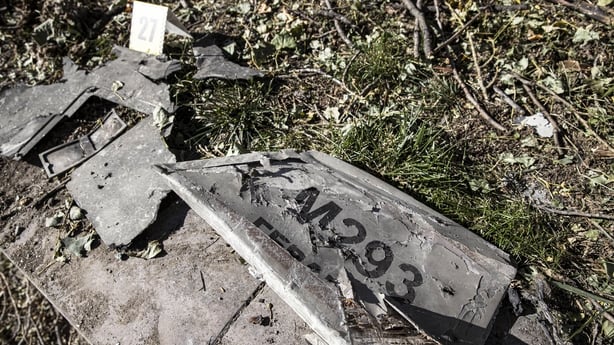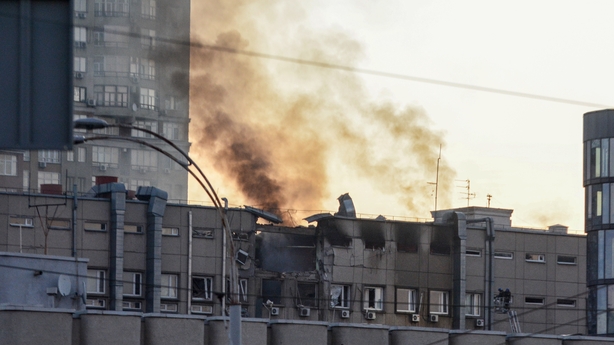Russia launched dozens of 'kamikaze' drones on Ukraine yesterday, hitting energy infrastructure and killing five people in the capital of Kyiv.
Ukrainians have nicknamed them 'mopeds' for the loud whirring noise their engines make as they fly overhead.
Ukraine says they are Iranian-made Shahed-136 attack drones - loitering munitions that cruise towards their target before plummeting at velocity and detonating on impact. Ukraine has moved to cut ties with Iran because of their use.
Iran denies supplying the drones to Russia and the Kremlin has not commented. The United States says Iran's denial is a lie.
Here's what we know about the devices.
Ukraine's army on 13 September first said it had destroyed an Iranian drone near Kupiansk, a town recaptured by Kyiv's troops during a rapid counter-offensive in its northeast last month.
The defence ministry identified the device as an Iranian-made Shahed-136, posting images of what appeared to be parts of a destroyed drone with "Geran-2" written on the side in Russian. The wingtip appeared to match that of a Shahed-136.

Russia initially used the drones to attack Ukrainian military hardware on the front lines, but in the second half of September it began using them for attacks on infrastructure in Odesa, Mykolaiv and Kharkiv regions, according to army data.
The first massive use of the drones on the Ukrainian capital followed on 17 October.
The drones that Kyiv says are the Shahed-136 devices have a wingspan of 2.5 metres and a mass of 200kg carrying a 40kg warhead, and fly at a cruise speed of 120km/h, Ukraine's air force spokesperson, Yuriy Ihnat, said.
"They can fly in bunches. On the radar, it is one mark, and in that mark there are actually five (drones)," Ihnat said. "Unfortunately, it is not possible to hit 100% (of them) because the target is difficult and small in size."
He has said the drones claim to have a range of 2,500km but can actually fly no more than 1,000km because of fuel limitations and their size.

Ukraine says it needs better air defences to handle the drones including anti-aircraft guns and large-calibre machine gun systems. Today, it said Kyiv would send an official note to Israel seeking immediate air defence supplies and cooperation in the sector.
Ukraine says the drones are mainly launched from the south, but there have also been cases of launches from Belarus and Russia's Kursk region. 85% of the drones are shot down, Ukraine said.
Ukraine shot down 51 Shahed-136 drones on 17 and 18 October, Mr Ihnat said. A day earlier, he put the tally of downed drones at 100 since Russia began using them.
Oleh Zhdanov, a Kyiv-based military analyst, said it was not "100% confirmed" that the drones were assembled in Iran.
"It's one and the same drone, just the assembly could be Syrian or Tajik... we took it completely apart and understand perfectly that it is made up of two parts - parts from China and parts that are produced by Iran itself," Mr Zhdanov said.
Read more:
US condemns Russian 'war crimes' after drone attack
Ukraine warns situation 'critical' after Russia attacks power grid

